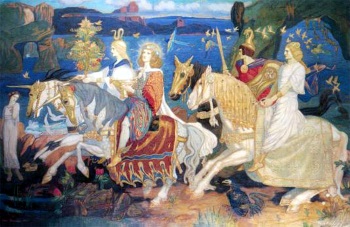
Ireland is a land rich in mythology and folklore. Reflected in the names of its lakes, rivers, valleys, glens and mountains. In Celtic lands it is not unusual to use the landscape as a mnemonic map. Geographical features hold a particular importance in Celtic peoples history, beliefs and culture. There is an understanding that we are part of and not separate from the land we inhabit. Consequently Celtic legends place the natural world at centre stage. In such stories things in nature can possess a spirit and presence of their own, including mountains, rocks, trees, rivers and all things of the land and the sea. Locations can be associated with a particular warrior, hero or deity. Each feature is linked to a story that stretches back beyond known history, passed on through oral tradition, some of which have subsequently been written down.
Amongst these geographical features, whether man-made, such as ancient mounds and standing stones, or naturally created features it is not unusual for some to be associated with the worship of pre-Christian deities. The aos sí or aes sídhe is an Irish term for a supernatural race that exist in Irish, Scottish and Manx mythology. Inhabiting an invisible world that coexists with the world of humans. They belong to the Otherworld (Aos Si) community whose world was reached through mists, hills, lakes, ponds, springs, loughs, wetland areas, caves, ancient burial sites, cairns and mounds.